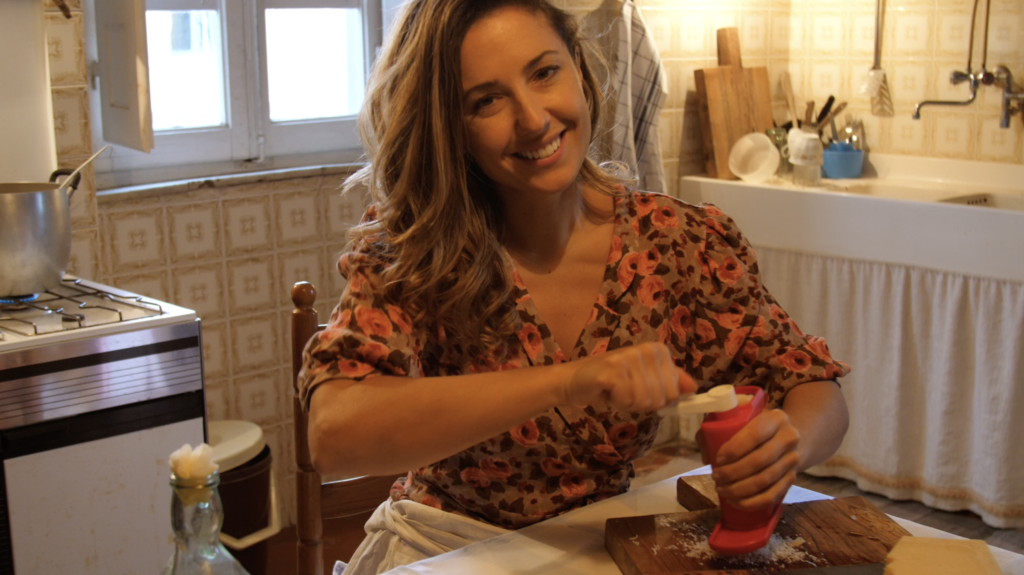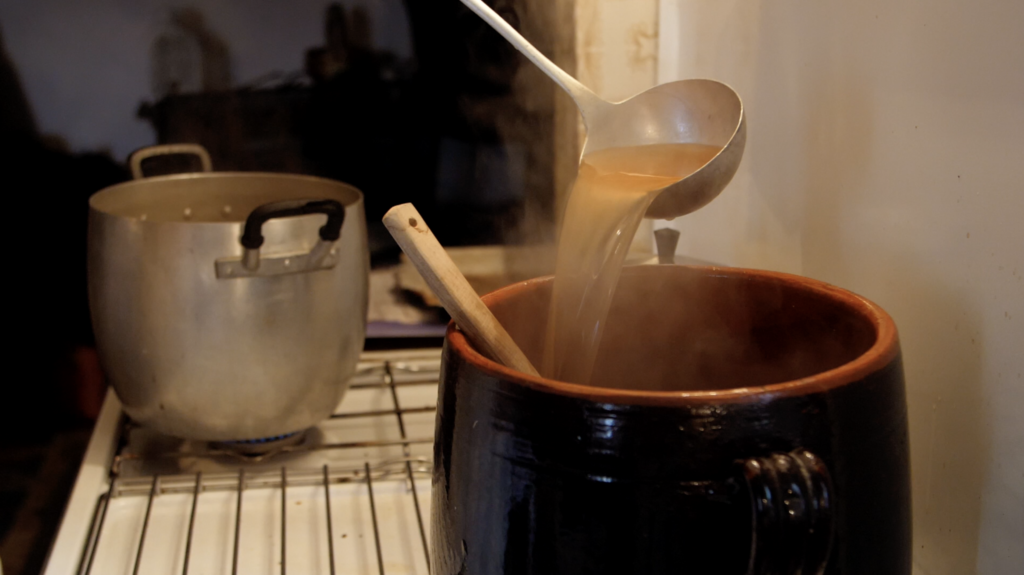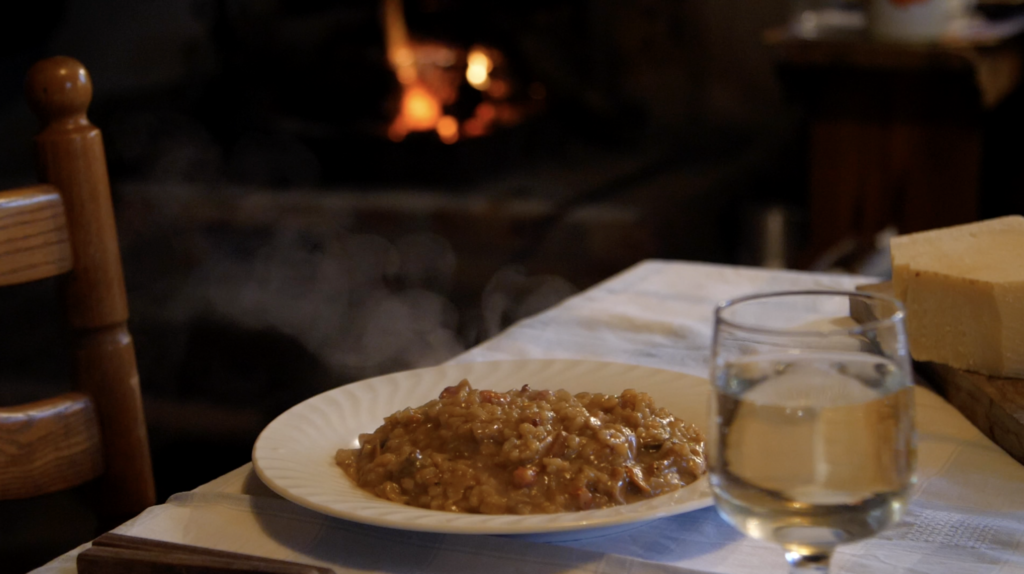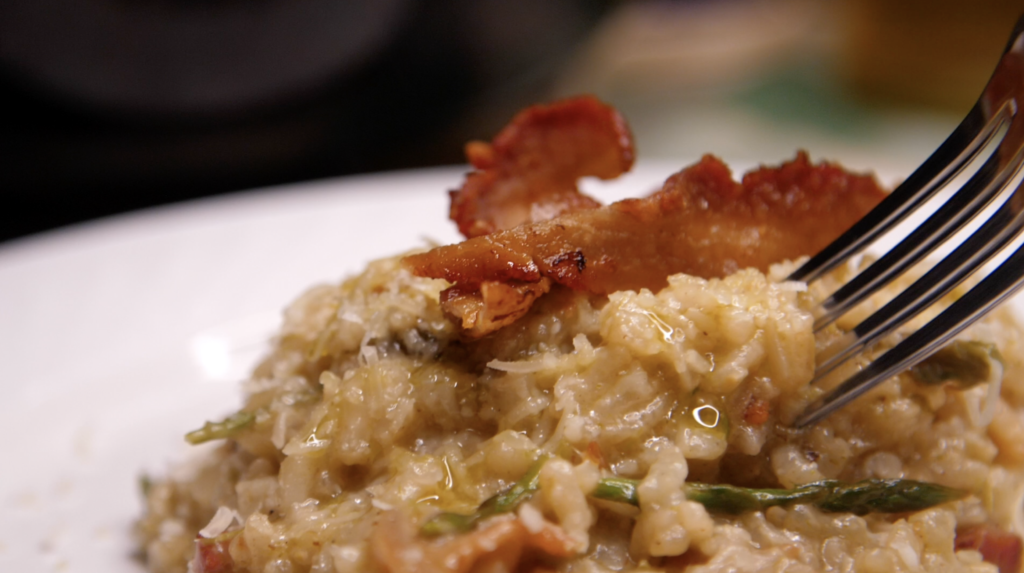
Is this the cosiest of all Italian winter dishes? It’s certainly the most satisfying comfort food, adored by home cooks, sophisticated restaurant chefs, children, carnivores and vegetarians alike. It feels like it may be a lot of work but it really isn’t. Whenever I suggest making this, Guido says “Ah no, amore… there’s no time to make risotto just for LUNCH!” But of all my recipes, I would say this really is one of the most simple to prepare.
In the video I use dried porcini mushrooms because I always have these on hand in case I can’t make it to the supermarket for some reason. However, if you have fresh mushrooms you can just cook them in the pot after adding the onion, with a little extra butter or olive oil. If you’re working with a vegetable like asparagus, peas or broccoli, you could (as I show in the last part of the video) cook them in a pan with a little butter and garlic and then blend a third of the cooked vegetables (with a little broth to lubricate things so your blender doesn’t break) so that the rice becomes gently flavoured with the vegetable, as well as having the actual pieces of asparagus/peas/broccoli stirred through as well.
This recipe serves four generous portions. It keeps well for a few days. When I make it just for myself and have leftovers, I add a little water to the pan to heat up the rice the next day (the flavours have usually intensified so it can take a little dilution). Of course, you could easily heat it up in the microwave but I’m trying to hold out from every getting one of those zapping, beeping modern machines… although perhaps it would save me scrubbing pots with leftover risotto stuck to the bottom. 🙂
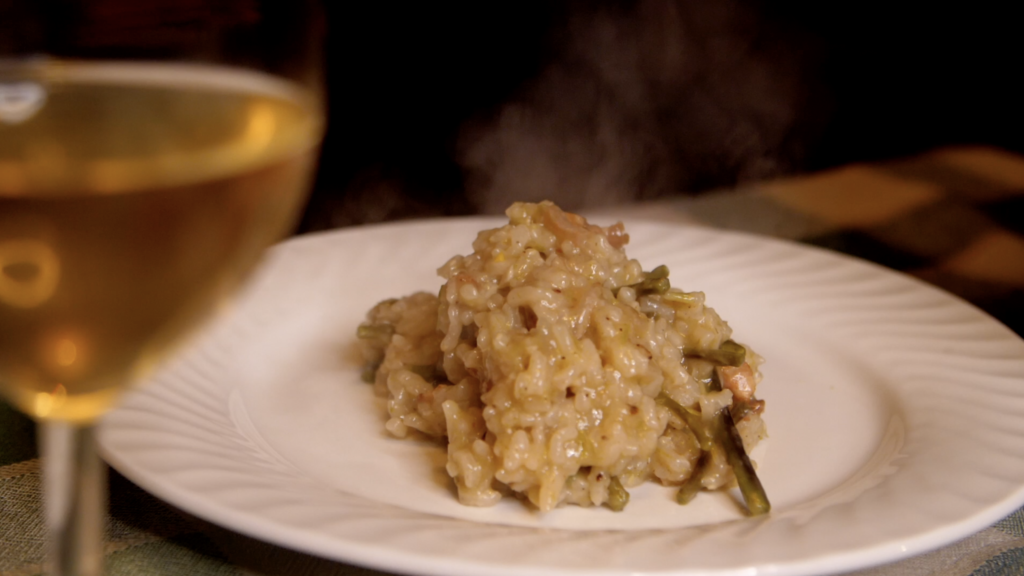
INGREDIENTS:
30 grams dried porcini mushrooms (I used two packets to really pack it with a strong flavour but one is sufficient, especially if you also use the mushroom-flavoured water) OR 2-3 CUPS OF RAW VEGETABLES BUT THE QUANTITY REALLY DEPENDS ON YOUR PREFERENCE
2 tablespoons butter
2 tablespoons olive oil (Just enough to coat the bottom of the pot and add to the risotto at the end)
160 grams chopped pancetta (I used two 160gram packets in the video because Guido is mad for pancetta so you can increase this if you or your loved one like lots of salty texture)
1 onion (about 193 grams but it really doesn’t matter)
330 grams Arborio rice (it must be this risotto rice because it becomes creamy and unctuous to give us a bit of a sauce)
1- 3/4 cup white wine
2 x stock cubes (you just want the broth to be a light brown but I have made this with one stock cube and just added a little extra seasoning)
salt / pepper
3/4 cup grated Parmigiano Reggiano cheese
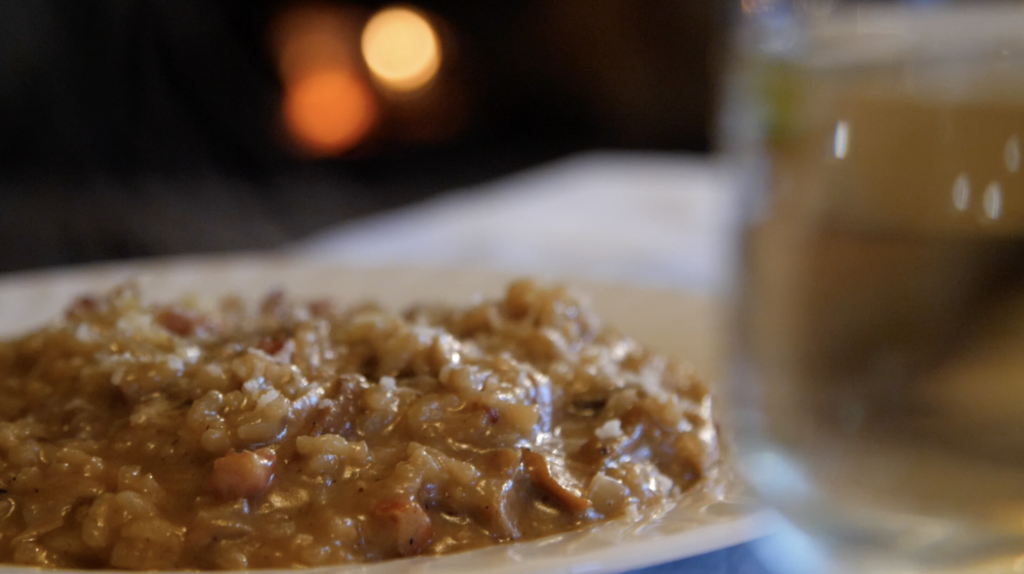
METHOD:
- Place dried porcini mushrooms in a bowl completely covered in water to hydrate for 15-20 minutes. (In the video I did this later on and only allowed about 8 minutes and they were still soft but this is the recommended hydration time.)
- In a pot, boil one litre of water for our broth. (If using liquid broth you can just heat this up.)
- Be sure to choose the second pot wisely. You want the heaviest pot you own so that things don’t burn and the rice cooks evenly. If you don’t have a fairytale pot, or in fact any pot with high sides, you could prepare the risotto in a large frypan – you just need to be a bit more careful when stirring. Put your second pot on a high heat with a little olive oil and a tablespoon of butter. Add the pancetta only when the butter is melted. Fry until crispy and golden.
- Dice the onion, turn down the heat, and add onion to the pancetta to coat it in all those delicious juices, cooking gently on a low-medium flame until translucent. If making a vegetarian risotto, just start here with some butter and olive oil.
- Now pour in the Arborio rice, make sure all the grains are slicked with oil/butter and cook for two minutes to ‘toast’. When you see this in risotto recipes it can be misleading for beginner cooks. It doesn’t mean we want golden rice. Just cook until the outer edges start becoming transparent but the centre is still white. In the video, I put a close-up of the rice at this point on the wooden spoon so you have a reference.
- I put 1 to 3/4 cup of white wine in the ingredient list above because honestly, I rarely measure it. Just enough to coat most of the rice. You can’t really go wrong with the quantity here. Just make sure you cook the rice for another two to three minutes, stirring well so we cook out the alcohol and just leave a lovely subtle flavour.
- Add the stock cubes to the first pot of boiling water to dissolve and find yourself a nice big ladle or a coffee mug to transport the broth from one pot to another.
- Now we’re ready to start cooking the rice. You want to add one ladle of broth to the rice pot at a time. Slow cooking Arborio rice is what creates that creamy sauce. They say you have to stir continually while making risotto but I managed to go down and get firewood and come back up without any disasters. Just keep the flame fairly low and be sure to wait until all the liquid is absorbed before adding another ladle of broth. The reason we want to keep the broth on a low heat is so that it’s hot enough to cook the rice when added. Sometimes you won’t need to use all your broth. Other times you may be coming to the end of your broth and the rice is still quite chewy, so just boil some more water to extend it.
- At some point during all your ladle-stir-wait process, you can chop and add the now hydrated porcini mushrooms. I tip the mushroom-flavoured water into broth pot so it heats up and flavours our risotto even more. In some cases, if your porcini mushrooms are super rustic from a greengrocer, there may be soil in the water, in which case, skip this part. However, if buying them from a supermarket you should be safe and the water really accentuates that rich mushroom flavour.
- When the rice is just cooked and there’s a lovely thick creaminess to the texture of your risotto, turn off the flame and taste to decide if it needs salt and pepper. If you want to make it truly decadent, you can stir through that remaining tablespoon of butter at this point.
- With the pot off the flame, stir through grated Parmigiano Reggiano cheese (again, this quantity depends on how cheesy you like your risotto) and serve immediately with a little extra cheese, pepper and olive oil on top. If you find that your risotto becomes too thick and congealed after the cheese is added, you can always stir through a little extra broth to loosen things up. Enjoy! I’m salivating just writing this and remembering how delicious it was.
